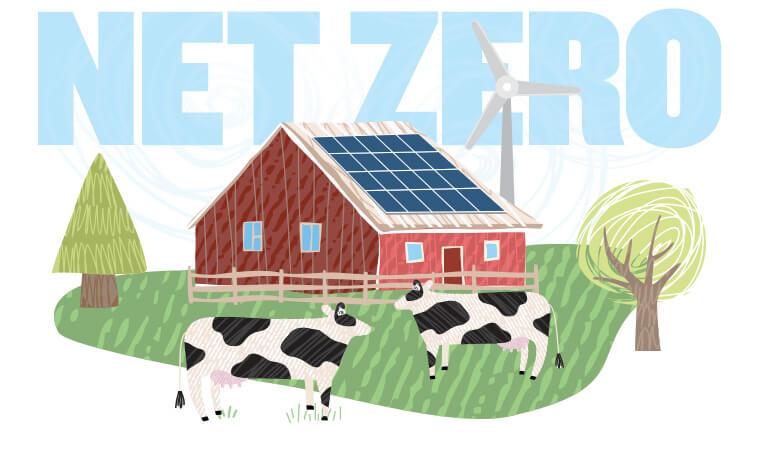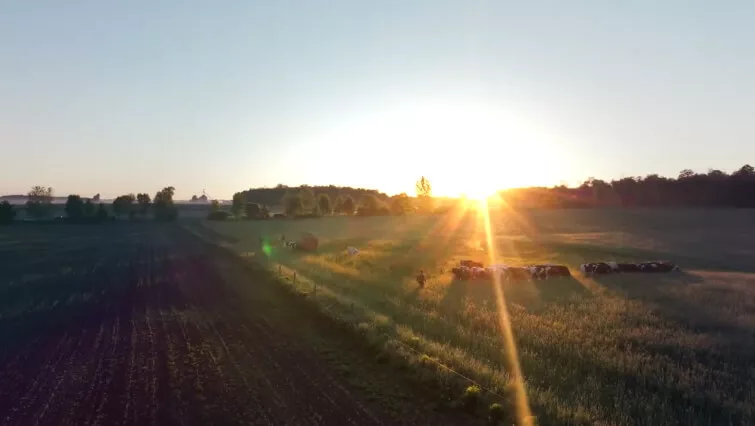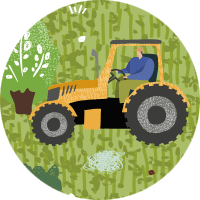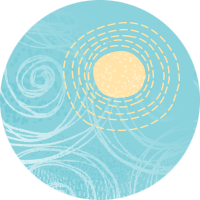

What does ‘net zero’ mean?
Net-zero emissions in the dairy farm sector means reaching a balance between greenhouse gas (GHG) emissions from farms and GHG removed from the atmosphere by farms by 2050. To get there, farmers must make efforts to reduce emissions as much as possible, identify ways to avoid emissions, and act to sequester carbon in their landscape to offset the remaining emissions. Learn more

To help farmers along the journey to net zero, DFC has released its Best Management Practices Guide to Mitigate Emissions on Dairy Farms. Developed in consultation with experts, the guide will help farmers identify and implement best management practices (BMPs) on their farm, including an overview of 30 BMP opportunities for reducing emissions, increasing carbon sequestration, and improving overall environmental sustainability.
Net Zero by 2050 is an ambitious goal and commitment, but generations of Canadian dairy farmers have adopted new practices based on science and innovation, so farmers are up to the challenge.

Dairy Farming Forward to 2050: Dairy Farmers of Canada’s Net-Zero Strategy
DOWNLOAD PDF

